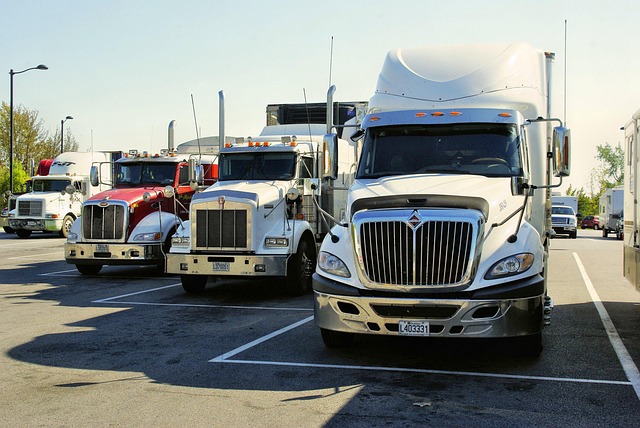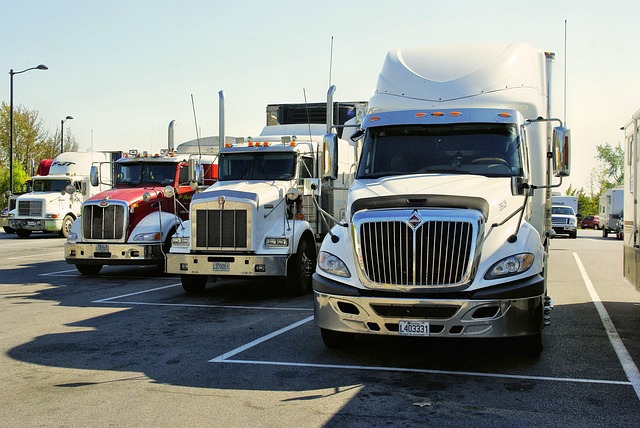Looking to register your car in California? This comprehensive guide breaks down the process step-by-step. From understanding key requirements and gathering essential documents to navigating VIN verification—a crucial step ensuring vehicle authenticity—you’ll learn everything needed for a smooth registration experience. We explore different registration types and outline the fees involved, empowering you to choose the best option. Follow these instructions precisely, and you’ll be legally registered in no time.
- Understand California Car Registration Requirements
- Gather Necessary Documents for Vehicle Registration
- Perform VIN Verification: Steps and Importance
- Choose an Appropriate Registration Type in California
- Submit Application and Pay Fees for Car Registration
Understand California Car Registration Requirements

Before registering your car in California, it’s crucial to understand the state’s specific requirements for vehicle registration. One key aspect is ensuring that your car passes a Vehicle Identification Number (VIN) verification process. This involves checking the VIN accuracy and ensuring the vehicle matches the information on record, which helps prevent fraud and ensures compliance with California’s regulations.
A mobile VIN verifier or mobile VIN inspection service can be particularly useful in this context. These services allow you to have your car’s VIN verified at your location, saving time and effort compared to traditional methods. By utilizing a mobile VIN verifier, you can streamline the registration process, making it more convenient for California residents looking to register their vehicles promptly and accurately.
Gather Necessary Documents for Vehicle Registration

Before you begin the registration process, ensure you have all the required documents for a smooth transaction. The most crucial piece is the Vehicle Identification Number (VIN) verification. This step involves confirming the vehicle’s identity and history through a comprehensive inspection. You can facilitate this with a mobile vin verifier or conduct a traditional vin inspection.
Gathering relevant paperwork, including ownership proof, vehicle registration records, and insurance documents, is essential. Additionally, you’ll need to present valid identification, such as a driver’s license or state-issued ID card. These documents are typically required by the California Department of Motor Vehicles (DMV) during the car registration procedure.
Perform VIN Verification: Steps and Importance

Before registering your car in California, performing a Vehicle Identification Number (VIN) verification is a crucial step. This process involves checking the vehicle’s history and ensuring it meets all legal requirements. You can do this by visiting the California Department of Motor Vehicles (DMV) website or using a trusted mobile VIN inspection service.
A mobile VIN verifier is particularly convenient, as they offer on-site inspections. These services use advanced technology to pull up a vehicle’s history, including accident reports, maintenance records, and outstanding recalls. By ensuring the car has not been reported stolen, damaged beyond repair, or had major structural issues, you can protect yourself from potential problems and ensure a smooth registration process.
Choose an Appropriate Registration Type in California

When registering your car in California, understanding the different registration types is key. The state offers various options depending on your vehicle’s age, use, and ownership status. One essential step in this process involves a VIN verification (Vehicle Identification Number) to ensure the car’s authenticity and history are accurate.
For instance, if you’re an individual purchasing a new or used car through a dealership or private seller, a standard registration process with mobile VIN inspection or mobile VIN verifier services is typically recommended. These services streamline the verification process by offering convenient on-site checks, saving time and effort. Conversely, for classic cars or vehicles over 25 years old, there might be specific registration categories that require additional documentation to prove their historical significance.
Submit Application and Pay Fees for Car Registration

After gathering all the necessary documents and ensuring your vehicle meets California’s requirements, it’s time to submit your application for car registration. This involves filling out a California Vehicle Registration Application (Form DV-140) and submitting it along with the required fees to the DMV.
The fees vary based on the type of vehicle and whether you’re registering it for the first time or renewing an existing registration. You can pay these fees online, by mail, or in person at a DMV field office. A key step in this process is completing the vin verification. This involves confirming your vehicle’s unique vehicle identification number (VIN) through a mobile vin verifier or vin inspection, ensuring both accuracy and security. Properly completing this step ensures your registration is processed smoothly and prevents potential issues down the line.
Registering a car in California involves understanding specific requirements, gathering essential documents, and completing crucial steps like VIN verification. By following these outlined procedures, from selecting the right registration type to submitting your application and fees, you can ensure a smooth process. Remember that accurate and timely vehicle registration is not only legal obligation but also helps maintain California’s efficient transportation network.
